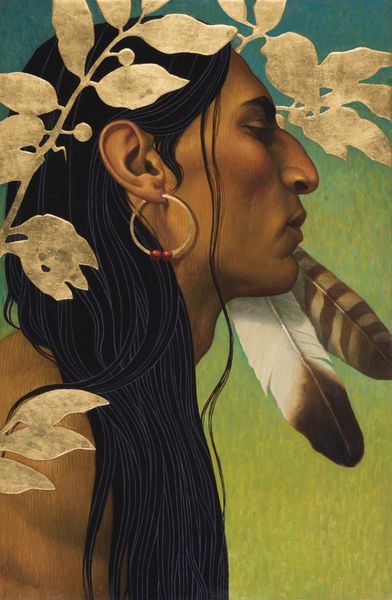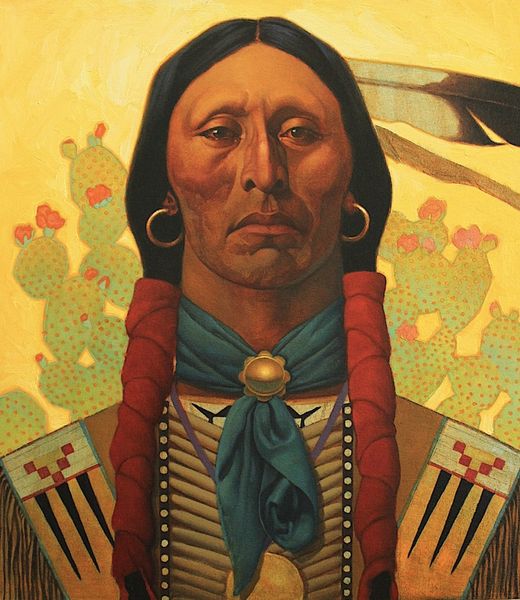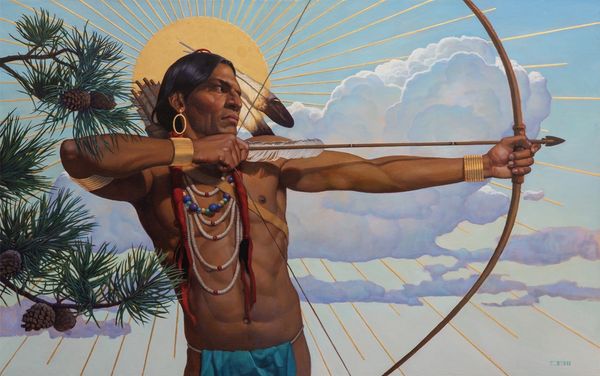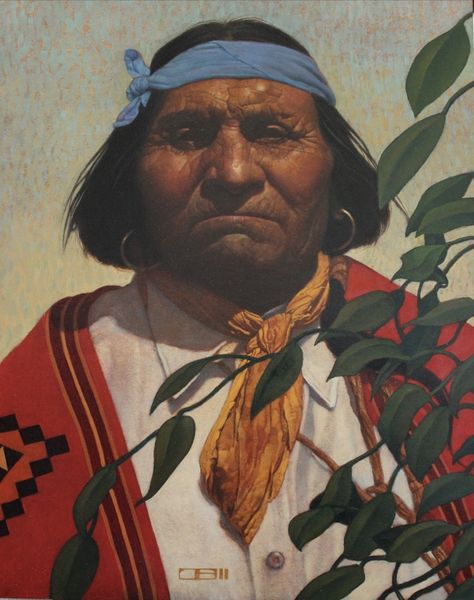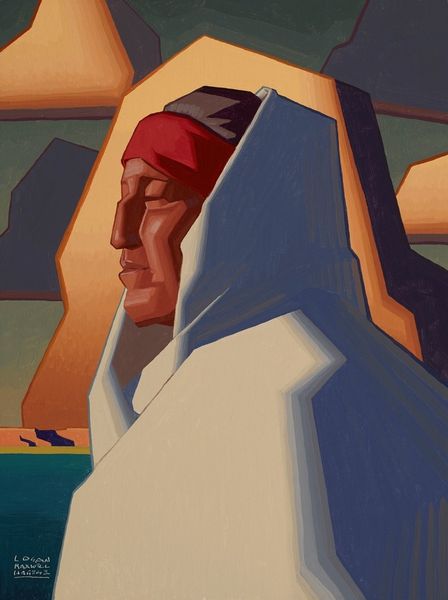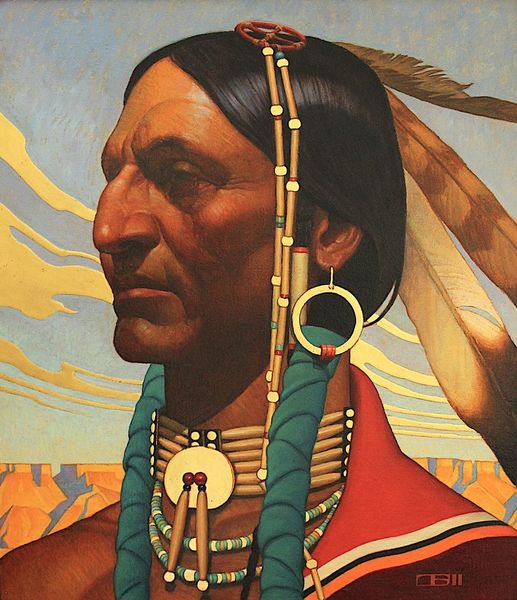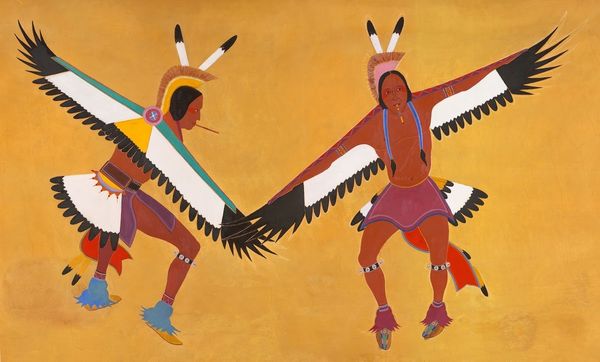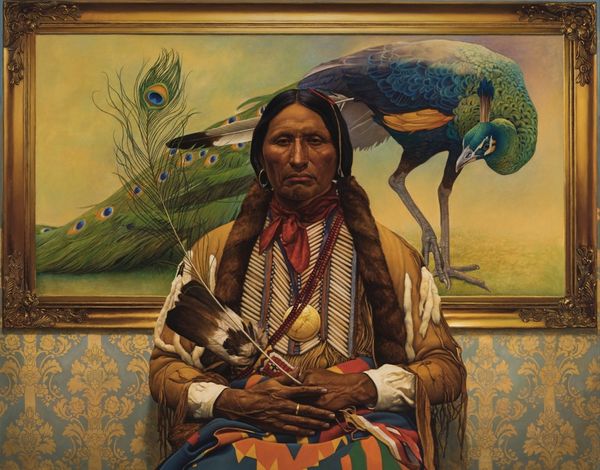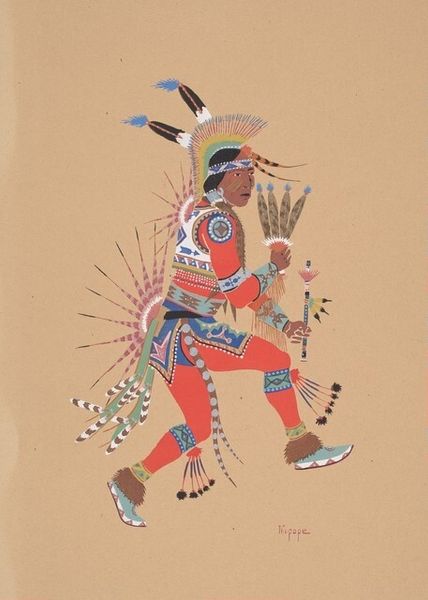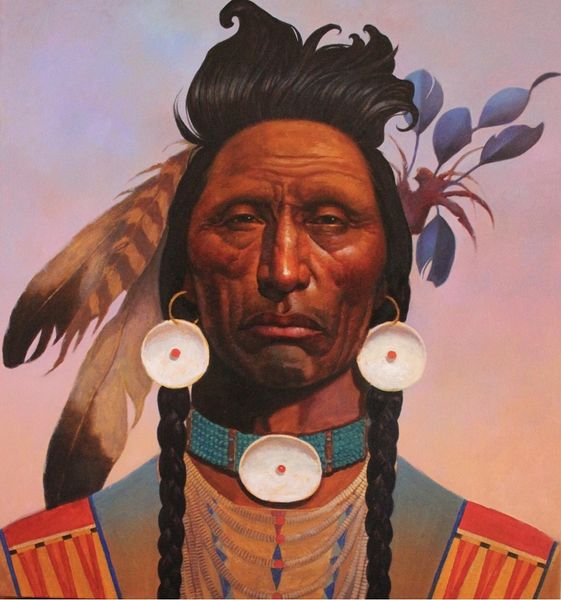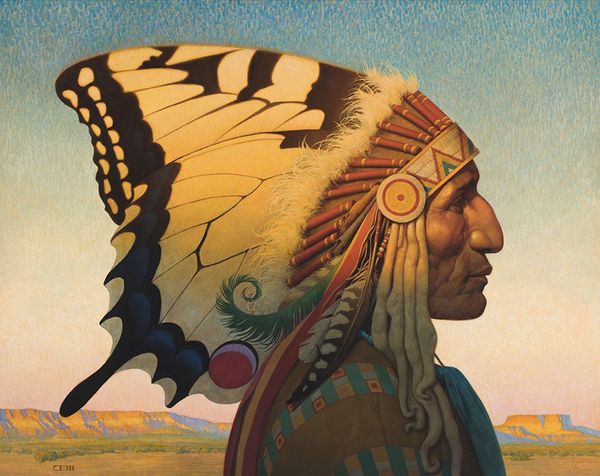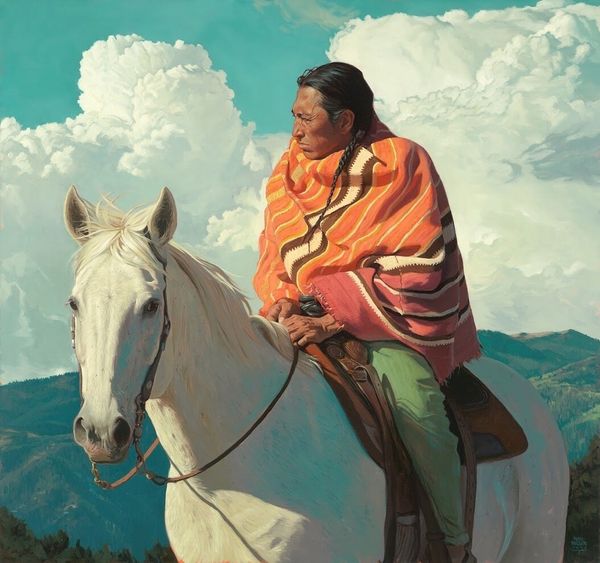
painting, oil-paint
#
portrait
#
painting
#
oil-paint
#
portrait art
#
realism
#
indigenous-americas
Copyright: Modern Artists: Artvee
Editor: We’re looking at Logan Maxwell Hagege’s painting, "Indigo," and it's hard to miss the figure's intense gaze and the stylized rendering of the indigenous man. There's something very direct and powerful about it. How do you interpret this work, especially within the context of Indigenous representation? Curator: That’s a great starting point. The painting’s strength lies in its engagement with historical representation. Consider how Indigenous peoples have historically been portrayed by non-Indigenous artists - often romanticized or stereotyped. Hagege, through his style which is both modern and referential, opens up a space for re-examining these narratives. How does the subject’s direct gaze challenge traditional representations? Editor: I see what you mean. The direct gaze feels like a reclaiming of agency. It's not a passive portrayal, but one that asserts presence and self-determination. And, it raises the question of how Indigenous artists themselves are now reclaiming visual narratives. Curator: Precisely. What is intriguing to me is how the artist has borrowed visual tropes of the past while simultaneously offering us an empowered, contemporary image. Think about the use of color, for instance, the striking red of the headband. How does that choice influence your perception? Editor: The red definitely commands attention, and the patterns feel culturally significant. Maybe this work is a launching point for discussions about cultural appropriation versus appreciation in art? Curator: Exactly. By encouraging viewers to question the layers of historical and contemporary representation, Hagege’s “Indigo” catalyzes important dialogue, not just about the subject, but also about our role in perception and interpretation. Editor: This was great, thank you. I learned a lot! Curator: My pleasure, I hope it gave you an enriched and critical way of thinking about how art shapes narratives and perceptions.
Comments
No comments
Be the first to comment and join the conversation on the ultimate creative platform.
